Дизайнерский Телеграм на этой неделе благоухает сиренью: Даша Соболева напоминает, что сирень нельзя рвать, Лена Гуляева составляет карту сирени Москвы, Алена Сокольникова делится примерами отечественной (и не только) продукции с изображениями сирени, а у нас «назрел» вопрос: почему в декоративно-прикладном искусстве так мало удачных образов сирени? Может быть, потому, что до недавнего времени сирень считалась садовым кустом, неблагородным растением? А, может, оттого, что в отрыве от куста ветка сирени становится безжизненной? А, может, просто очень сложно добиться от нарисованной или вылепленной ветки сирени всего букета ассоциаций, связанных с цветением сирени? Ощущения обновления и возрождения, воспоминаний о влюбленности,
прогулках в белые ночи, школьных каникулах…
Из русских художников лучше всего это получилось, пожалуй, у нашего без преувеличения любимого мастера, Юрия Михайловича Львова, работавшего на Первомайском фарфоровом заводе. Большинство его скульптурных миниатюр настолько по-весенне-летнему теплые, что каждую из них можно мысленно дополнить цветущим кустом сирени: возможно, отчасти поэтому Юрий Михайлович не стеснялся использовать сиреневый цвет в своих работах, а в 1969 г. и вообще создал композицию, в которой сирень является протагонистом, «Когда цветет сирень»…
Будем вам очень признательны, если поделитесь своими любимыми изображениями этого растения, ассоциациями с его цветением и мыслями о том, почему же сирень - нечастый мотив у художников-прикладников.
Дополнительные изображения см. в комментариях к посту.
———
This week, the design community in Telegram is simply blooming with lilacs: Daria Soboleva reminds us not to pick lilacs, Lena Gulyaeva is mapping out Moscow’s lilac spots, Alyona Sokolnikova shares examples of Russian (and foreign) products featuring lilac motifs, and we’ve been wondering: why are lilacs so underrepresented in decorative arts? Could it be because, until recently, lilacs were seen as humble garden blooms unlike chrysanthemums and other noble flowers, for example? Or is it because a cut branch loses its vitality once separated from the bush? Or perhaps it is incredible difficult to capture the range of associations one has with blooming lilacs such as renewal, rebirth, memories of first love, school vacations in a painted or sculpted form?
Of all the Russian designers, this motif was perhaps best represented by our favorite (no exaggeration) porcelain artist, Yuri Lvov, who was employed by Pervomaysky Porcelain Factory. Most of his porcelain genre scenes are so warm and spring-like that you can almost imagine a blooming lilac bush beside each one. Maybe that’s why he wasn’t afraid of using lilac hues in his works and, in 1969, even created a miniature called “When the Lilacs Bloom”, where lilacs take center stage…
We’d be very grateful if you shared your favorite depictions of lilacs, the feelings blooming lilacs evoke in you, and your thoughts on why this motif is so rare in applied arts.
For more images, check out the comments down below.
(photos: iss.rybmuseum.ru, goskatalog.ru, dvaveka.ru, sov-art.ru, yarodom.livejournal.com, dzen.ru/r_grani)
прогулках в белые ночи, школьных каникулах…
Из русских художников лучше всего это получилось, пожалуй, у нашего без преувеличения любимого мастера, Юрия Михайловича Львова, работавшего на Первомайском фарфоровом заводе. Большинство его скульптурных миниатюр настолько по-весенне-летнему теплые, что каждую из них можно мысленно дополнить цветущим кустом сирени: возможно, отчасти поэтому Юрий Михайлович не стеснялся использовать сиреневый цвет в своих работах, а в 1969 г. и вообще создал композицию, в которой сирень является протагонистом, «Когда цветет сирень»…
Будем вам очень признательны, если поделитесь своими любимыми изображениями этого растения, ассоциациями с его цветением и мыслями о том, почему же сирень - нечастый мотив у художников-прикладников.
Дополнительные изображения см. в комментариях к посту.
———
This week, the design community in Telegram is simply blooming with lilacs: Daria Soboleva reminds us not to pick lilacs, Lena Gulyaeva is mapping out Moscow’s lilac spots, Alyona Sokolnikova shares examples of Russian (and foreign) products featuring lilac motifs, and we’ve been wondering: why are lilacs so underrepresented in decorative arts? Could it be because, until recently, lilacs were seen as humble garden blooms unlike chrysanthemums and other noble flowers, for example? Or is it because a cut branch loses its vitality once separated from the bush? Or perhaps it is incredible difficult to capture the range of associations one has with blooming lilacs such as renewal, rebirth, memories of first love, school vacations in a painted or sculpted form?
Of all the Russian designers, this motif was perhaps best represented by our favorite (no exaggeration) porcelain artist, Yuri Lvov, who was employed by Pervomaysky Porcelain Factory. Most of his porcelain genre scenes are so warm and spring-like that you can almost imagine a blooming lilac bush beside each one. Maybe that’s why he wasn’t afraid of using lilac hues in his works and, in 1969, even created a miniature called “When the Lilacs Bloom”, where lilacs take center stage…
We’d be very grateful if you shared your favorite depictions of lilacs, the feelings blooming lilacs evoke in you, and your thoughts on why this motif is so rare in applied arts.
For more images, check out the comments down below.
(photos: iss.rybmuseum.ru, goskatalog.ru, dvaveka.ru, sov-art.ru, yarodom.livejournal.com, dzen.ru/r_grani)
3❤41👍12🔥3
group-telegram.com/midcenturymodern/17961
Create:
Last Update:
Last Update:
Дизайнерский Телеграм на этой неделе благоухает сиренью: Даша Соболева напоминает, что сирень нельзя рвать, Лена Гуляева составляет карту сирени Москвы, Алена Сокольникова делится примерами отечественной (и не только) продукции с изображениями сирени, а у нас «назрел» вопрос: почему в декоративно-прикладном искусстве так мало удачных образов сирени? Может быть, потому, что до недавнего времени сирень считалась садовым кустом, неблагородным растением? А, может, оттого, что в отрыве от куста ветка сирени становится безжизненной? А, может, просто очень сложно добиться от нарисованной или вылепленной ветки сирени всего букета ассоциаций, связанных с цветением сирени? Ощущения обновления и возрождения, воспоминаний о влюбленности,
прогулках в белые ночи, школьных каникулах…
Из русских художников лучше всего это получилось, пожалуй, у нашего без преувеличения любимого мастера, Юрия Михайловича Львова, работавшего на Первомайском фарфоровом заводе. Большинство его скульптурных миниатюр настолько по-весенне-летнему теплые, что каждую из них можно мысленно дополнить цветущим кустом сирени: возможно, отчасти поэтому Юрий Михайлович не стеснялся использовать сиреневый цвет в своих работах, а в 1969 г. и вообще создал композицию, в которой сирень является протагонистом, «Когда цветет сирень»…
Будем вам очень признательны, если поделитесь своими любимыми изображениями этого растения, ассоциациями с его цветением и мыслями о том, почему же сирень - нечастый мотив у художников-прикладников.
Дополнительные изображения см. в комментариях к посту.
———
This week, the design community in Telegram is simply blooming with lilacs: Daria Soboleva reminds us not to pick lilacs, Lena Gulyaeva is mapping out Moscow’s lilac spots, Alyona Sokolnikova shares examples of Russian (and foreign) products featuring lilac motifs, and we’ve been wondering: why are lilacs so underrepresented in decorative arts? Could it be because, until recently, lilacs were seen as humble garden blooms unlike chrysanthemums and other noble flowers, for example? Or is it because a cut branch loses its vitality once separated from the bush? Or perhaps it is incredible difficult to capture the range of associations one has with blooming lilacs such as renewal, rebirth, memories of first love, school vacations in a painted or sculpted form?
Of all the Russian designers, this motif was perhaps best represented by our favorite (no exaggeration) porcelain artist, Yuri Lvov, who was employed by Pervomaysky Porcelain Factory. Most of his porcelain genre scenes are so warm and spring-like that you can almost imagine a blooming lilac bush beside each one. Maybe that’s why he wasn’t afraid of using lilac hues in his works and, in 1969, even created a miniature called “When the Lilacs Bloom”, where lilacs take center stage…
We’d be very grateful if you shared your favorite depictions of lilacs, the feelings blooming lilacs evoke in you, and your thoughts on why this motif is so rare in applied arts.
For more images, check out the comments down below.
(photos: iss.rybmuseum.ru, goskatalog.ru, dvaveka.ru, sov-art.ru, yarodom.livejournal.com, dzen.ru/r_grani)
прогулках в белые ночи, школьных каникулах…
Из русских художников лучше всего это получилось, пожалуй, у нашего без преувеличения любимого мастера, Юрия Михайловича Львова, работавшего на Первомайском фарфоровом заводе. Большинство его скульптурных миниатюр настолько по-весенне-летнему теплые, что каждую из них можно мысленно дополнить цветущим кустом сирени: возможно, отчасти поэтому Юрий Михайлович не стеснялся использовать сиреневый цвет в своих работах, а в 1969 г. и вообще создал композицию, в которой сирень является протагонистом, «Когда цветет сирень»…
Будем вам очень признательны, если поделитесь своими любимыми изображениями этого растения, ассоциациями с его цветением и мыслями о том, почему же сирень - нечастый мотив у художников-прикладников.
Дополнительные изображения см. в комментариях к посту.
———
This week, the design community in Telegram is simply blooming with lilacs: Daria Soboleva reminds us not to pick lilacs, Lena Gulyaeva is mapping out Moscow’s lilac spots, Alyona Sokolnikova shares examples of Russian (and foreign) products featuring lilac motifs, and we’ve been wondering: why are lilacs so underrepresented in decorative arts? Could it be because, until recently, lilacs were seen as humble garden blooms unlike chrysanthemums and other noble flowers, for example? Or is it because a cut branch loses its vitality once separated from the bush? Or perhaps it is incredible difficult to capture the range of associations one has with blooming lilacs such as renewal, rebirth, memories of first love, school vacations in a painted or sculpted form?
Of all the Russian designers, this motif was perhaps best represented by our favorite (no exaggeration) porcelain artist, Yuri Lvov, who was employed by Pervomaysky Porcelain Factory. Most of his porcelain genre scenes are so warm and spring-like that you can almost imagine a blooming lilac bush beside each one. Maybe that’s why he wasn’t afraid of using lilac hues in his works and, in 1969, even created a miniature called “When the Lilacs Bloom”, where lilacs take center stage…
We’d be very grateful if you shared your favorite depictions of lilacs, the feelings blooming lilacs evoke in you, and your thoughts on why this motif is so rare in applied arts.
For more images, check out the comments down below.
(photos: iss.rybmuseum.ru, goskatalog.ru, dvaveka.ru, sov-art.ru, yarodom.livejournal.com, dzen.ru/r_grani)
BY Mid-Century, More Than
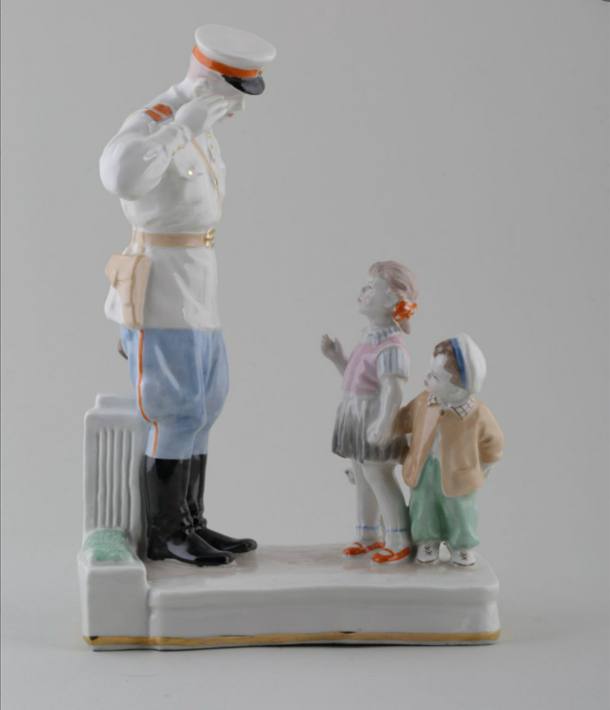
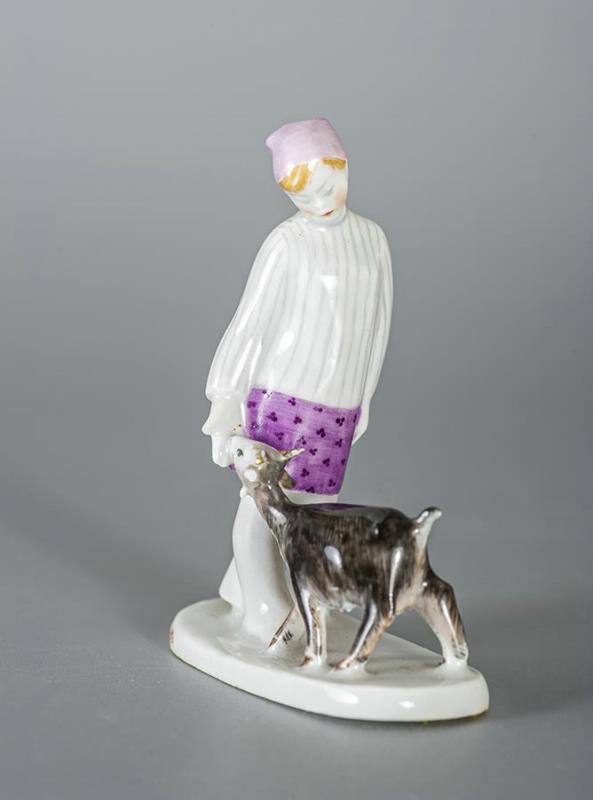
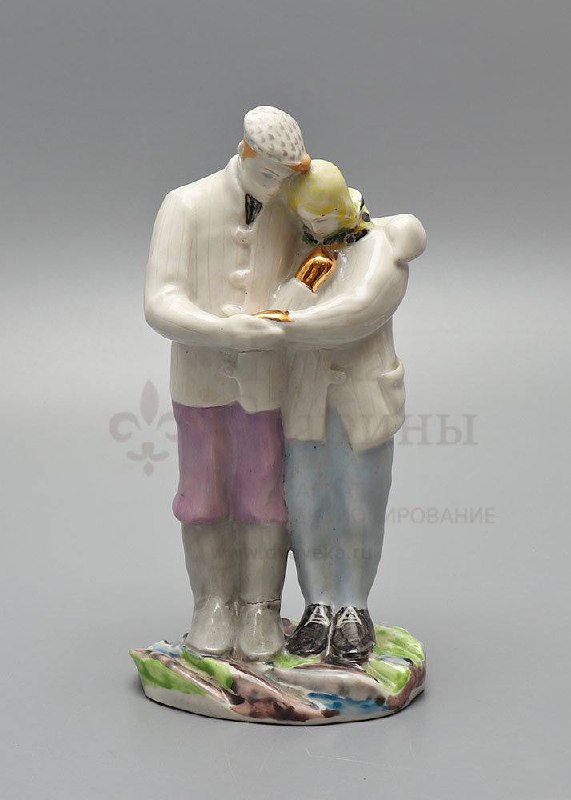
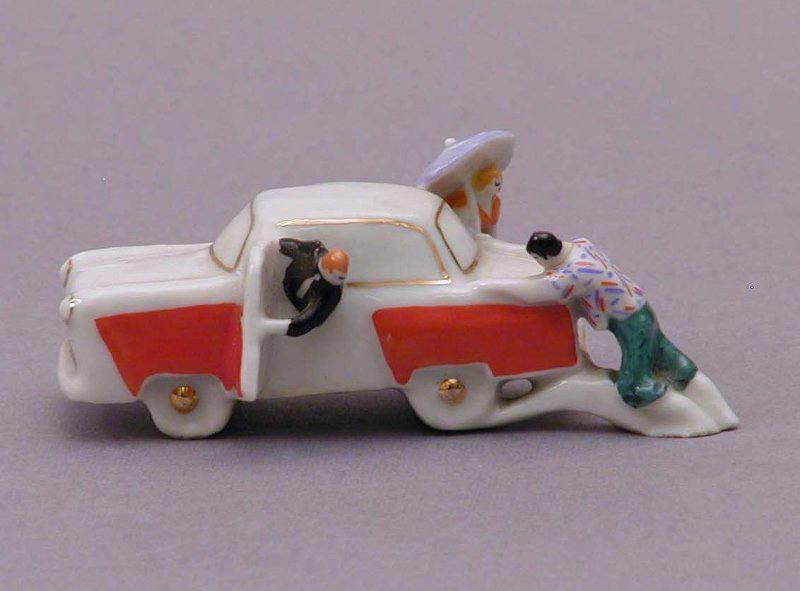
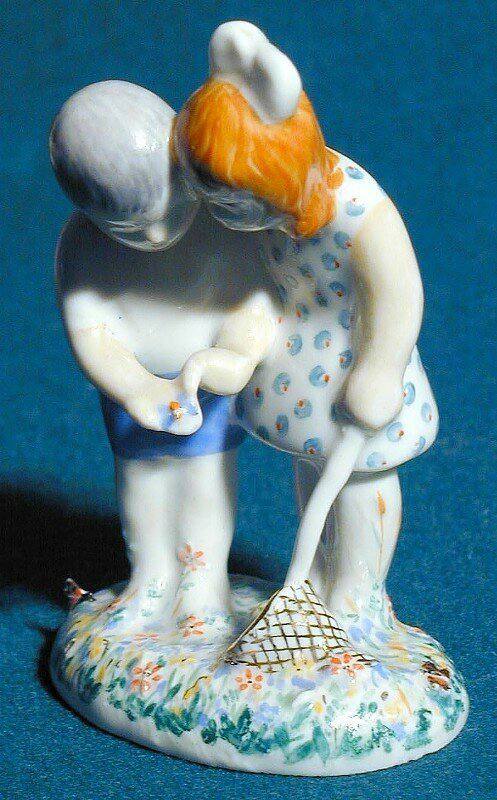
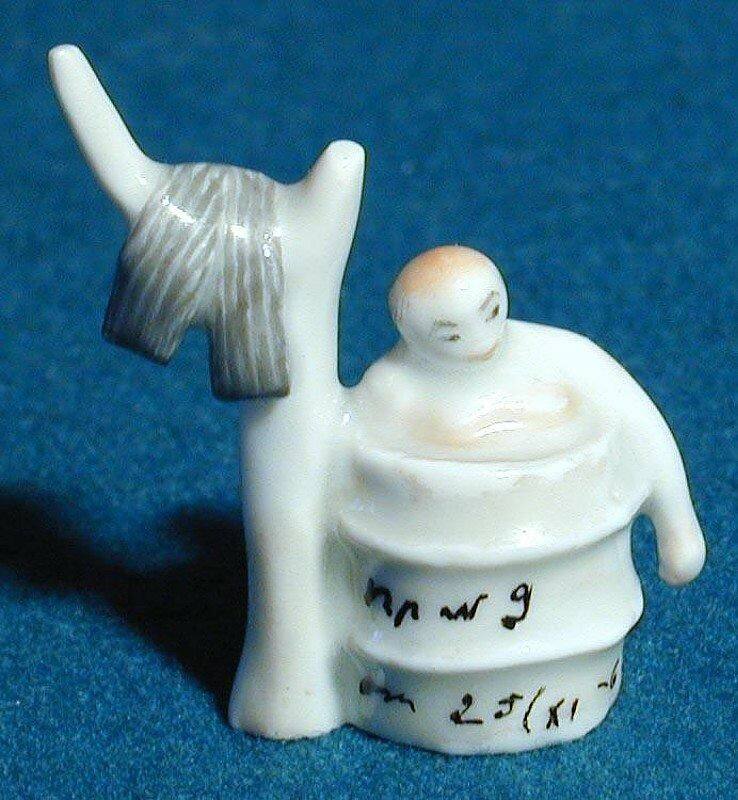

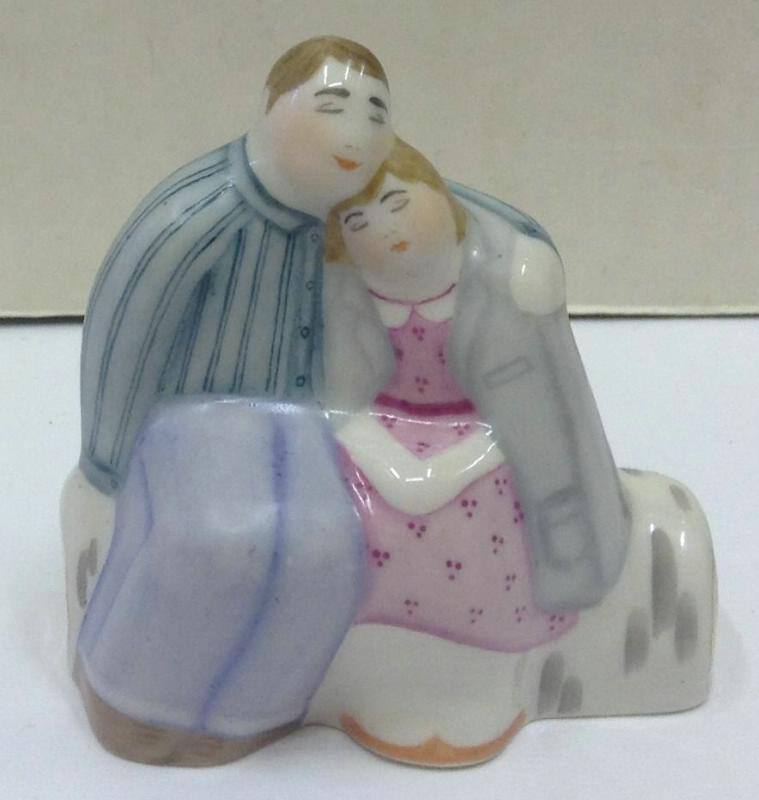
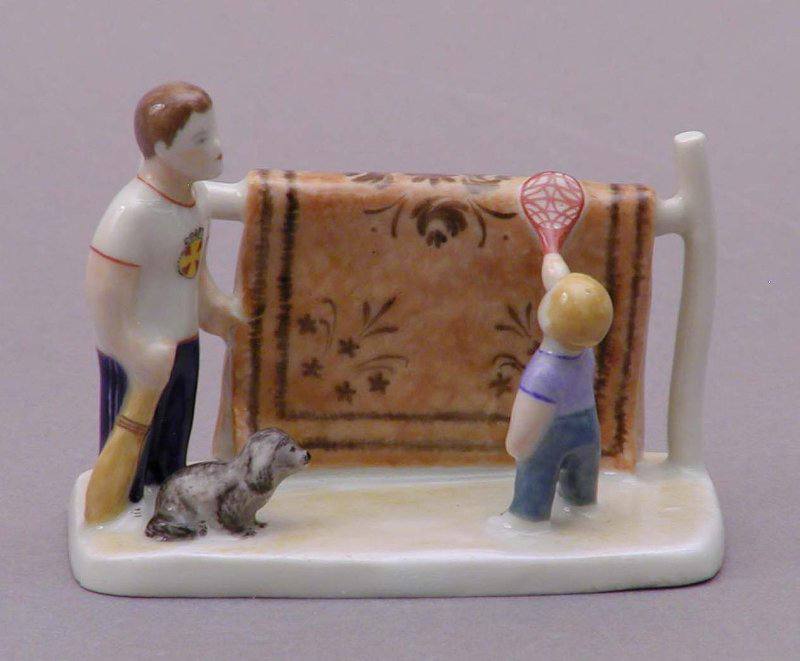

Share with your friend now:
group-telegram.com/midcenturymodern/17961
